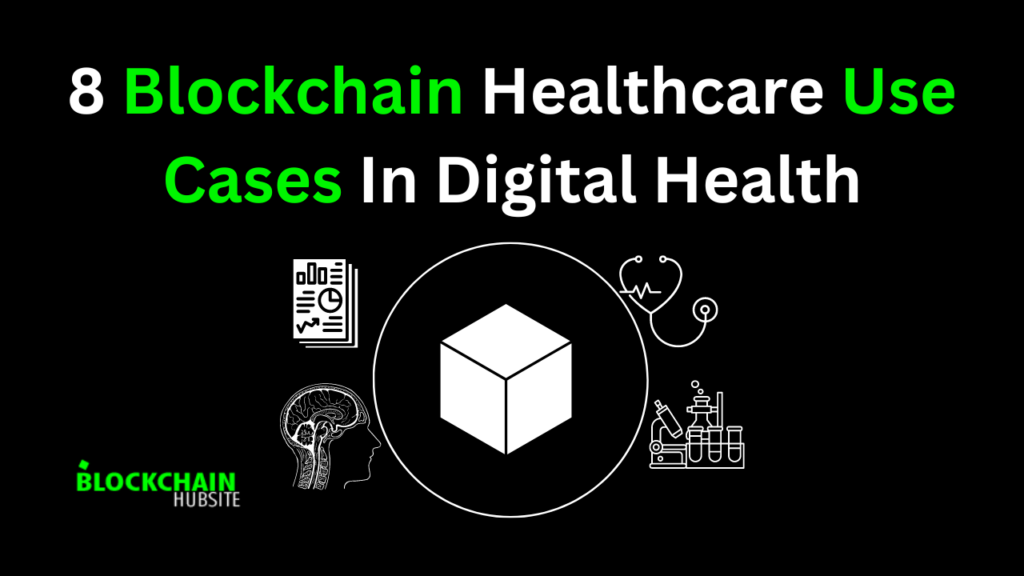
Table of Contents
Introduction
The strength of blockchain technology comes from its decentralized, networked architecture. Blockchain data is produced and stored by several linked computers, giving crypto compliance analysts access to enormous datasets to monitor.
The market for cryptocurrencies has grown significantly over time. Statista said 8.95 million people used blockchain wallets globally in the third quarter of 2016. This rose to 50.71 million by the second quarter of 2020.
This also refers to the relative value of cryptocurrencies. The worth of the industry has consistently increased even if values fluctuate over time with highs and lows. For instance, in September 2016, bitcoin was $608.44. On February 21st 2021, it was US$57,489.10. More users and value will undoubtedly result in more illegal activity, but this is nothing to be worried about.
Fortunately, blockchain analytics is affordable and scalable for companies of all sizes functioning inside financial or cryptocurrency systems. And it’s a cheap way to achieve safety and compliance.
Blockchain technology has spread globally and significantly influenced several sectors, including supply chain management, healthcare, and finance. However, as the number of applications for blockchain technology increases, so does the demand for blockchain analytics.
Blockchain analytics is the process of gathering, analyzing, and interpreting data from blockchain networks. It employs various analytical methods and tools to extract meaningful information from blockchain data, including transactional information, network activity, and smart contract implementations. The efficiency, security, and transparency of blockchain networks can be enhanced with the help of blockchain analytics.
In this post, we’ll look at blockchain analytics, how it works, and why it’s vital in today’s digital economy.
What is Blockchain Analytics?

Blockchain analytics analyses data recorded on a blockchain to extract information and better understand the blockchain ecosystem. It includes evaluating the transaction data and other significant data points stored on the blockchain using specific software tools and methods. Blockchain analytics may be used to spot fraudulent activities, spot suspicious patterns, and make sure that laws are being observed.
Importance of blockchain analytics

Hackers stole cryptocurrencies worth USD 1.7 billion in 2018. Cryptocurrency exchanges and payment systems contributed $950 million of that total.
So how can you defend your company against dangerous commercial dealings or unethical actors? Blockchain analytics is the answer.
Blockchain analytics aid financial institutions and cryptocurrency companies manage counterparty and internal risk. It’s an essential tool to safeguard your clients, company, and reputation from the effects of illegal or unethical activities on the blockchain. Building investor and user confidence, and therefore the entire health of the cryptocurrency industry, depends on blockchain analytics to identify and prevent financial crime.
These technological solutions provide risk-based monitoring that stops transactions from passing through previously flagged cryptocurrency wallets. They rely on best-in-class data quality and real-time predictive analytics in their most successful configurations.
Despite the inherent anonymity of cryptocurrency transactions, it is still feasible to track those payment records using blockchain analytics and, when combined with KYC information, identify who is paying for what. Thus, cryptocurrency blockchains have become a pseudonymous platform. Because “follow the money” data is more transparent than fiat money movements, money laundering and unlawful criminal activity funding are far more challenging.
This also boosts confidence in the cryptocurrency industry. The legitimacy of the party with whom they transact business concerns people and companies.
This assurance is provided by blockchain analytics.
Blockchain analytics providers search the public ledger of blockchain transactions for general information on transaction clusters and the relationships between individual cryptocurrency wallets.
How Does Blockchain Analytics Work?
Blockchain analytics first adopts an established set of procedures to gather and examine publicly available data on the blockchain. CIAs (Cryptocurrency Intelligence Analysts) often perform this task by reviewing wallet activity and transaction data to search for patterns and behaviours that might indicate the execution of the illegal activity.
To confirm the statements, CIAs typically engage with a team of data scientists who amplify the results using pattern recognition and machine learning procedures. Before adding this newly tagged data to their monitoring tools, competent, enterprise-grade blockchain analytics companies carefully go through this procedure to ensure the highest level of accuracy.
Blockchain analytics extracts essential information from data using a variety of tools and methodologies, including:
1. Data Visualization

Data visualization is an essential component of blockchain analytics. Consumers need visual representations of blockchain data, such as charts and graphs, to help them understand the data and identify trends.
2. Machine Learning

Another essential tool for blockchain analytics is machine learning. It involves analyzing blockchain data using statistical models and algorithms to look for trends and abnormalities. On a blockchain network, suspicious activities, such as fraud, money laundering, and cyberattacks, may be detected using machine learning.
3. Network Analysis

The process of evaluating the structure and behaviour of a blockchain network to uncover trends and patterns is known as network analysis. This can assist in locating bottlenecks, enhancing network functionality, and maximizing network effectiveness.
4. Smart Contract Analysis

Analysis of the code and operation of smart contracts on a blockchain network is known as “smart contract analysis.” This can help locate weaknesses and potential security risks and guarantee the proper operation of smart contracts.
Advantages of Blockchain Analytics
Blockchain analytics can deliver precise monitoring of crypto-environments to ensure the advantages listed below:
1. Preventing Money Laundering

Money laundering can be reduced since blockchain technology provides an immutable ledger of all transactions. This is significant for businesses operating in regions with strict anti-money laundering (AML) rules. Money laundering may be precisely detected and ultimately avoided using blockchain analytics tools that compare consumer data with cryptocurrency transaction histories.
2. Protecting from Fraud

Blockchain analytics services safeguard crypto market players from fraud by extracting public data from the blockchain and analyzing previous fraudulent transactions. Because fraudulent transactions may be tracked back to their origin, missing funds are more likely to be found.
3. Detecting Criminal Activities
Businesses may contribute to developing a safer crypto market by using blockchain analytics. When employing AML compliance tools to detect illegal activity on the blockchain, false positives can disrupt operations and delay client transaction confirmation. The information must be precise and comprehensive. The finest blockchain analytics solutions reduce the number of false positives by connecting crypto addresses to well-known organizations and spotting trends in crypto transactions linked to criminal activity.
Although users are anonymous on the blockchain, they are pseudonymous and may be identified if their wallets can be matched with customer identification information.
4. Enabling Crypto Risk Management

Your compliance team can take action to pause or reject a withdrawal to stop the further flow of funds and fulfil regulatory obligations to submit a suspicious activity report (SAR) if you can determine whether there is a risk of illegal activity associated with a cryptocurrency transaction. This assessment can be done by comparing the risk to risk controls. By using blockchain analytics, it is possible to assign risk ratings to specific transactions or wallets under the house’s risk policies and regulations, allowing for the identification of activity and consequent risk reduction.
The most effective risk-based management stops risk in its tracks and detects danger accurately and quickly. An analytics tool may assist in defending your consumers and your enterprises from any deliberate or unintended financial crime by reporting an illegal transaction.
5. Ensuring Crypto Compliance
Although Bitcoin may have a reputation for being the wild west of financial services in terms of compliance, it is a highly regulated industry. Depending on the experience and capabilities of regulators and enforcement organizations, various countries have varying regulatory thresholds. For instance, US officials expect that all cryptocurrency transactions involving US companies or persons, whether onshore or offshore, would be governed by national banking rules.
Blockchain analytics supports companies in ensuring regulatory compliance and accelerating company growth by creating a more secure crypto environment.
What are the challenges of blockchain analytics?
While the advantages of on-chain data analysis are clear, the entire process is challenging and complex. Blockchain enthusiasts who want to use data generated by it will face a few significant challenges:
Lack of standardization: Since blockchain data does not have a standard data format or schema, comparing and evaluating data from various blockchain networks is challenging.
Data privacy: Since user privacy and security are prioritized in the architecture of blockchain networks, accessing and analyzing data may be difficult.

Data volume: Because blockchain networks create massive volumes of data, it might be challenging to manage and analyze data properly.
Data quality: On-chain data might need to be more consistent, correct, or complete, which can affect the analysis’s accuracy and dependability.
Scalability: Systems and tools for blockchain analytics must handle massive amounts of data and transactions in real time.
The blockchain’s decentralized nature: Since it is decentralized, no single entity or organization owns or controls the data, making it challenging to get a comprehensive and accurate picture of the network.

Applications of Blockchain Analytics
1. Accessing public financial transaction data

Since Bitcoin, the original blockchain implementation, is all about cryptocurrencies, blockchain analytics would be used to examine financial transactions. Early adopters of blockchain analytics include law enforcement, which continues to utilize models to spot allegedly fraudulent and illegal conduct.
Chainalysis, specializing in Bitcoin investigations, offers a tool called Chainalysis Reactor that enables users to do cryptocurrency forensics to link transactions to actual people’s identities. Blockchain technology isn’t only for crooks; blockchain analytics may open fresh perspectives on the value of various markets, P2P transactions, currency flows, the wealth of nation-states, and other market values. For instance, Ethereum has become a significant funding source for tech firms, and its research may provide a more thorough look at the sector.
2. Connecting with the Internet of Things (IoT)

The Internet of Things (IoT) is a group of online-connected devices that primarily function without human involvement. These devices include refrigerators, doorbell cameras, remote temperature sensors, oil leak detectors beneath the ocean, and automobile parts.
The centralized structure of typical IoT systems currently limits their capacity to scale and may result in bottlenecks. Businesses are attempting to use blockchain networks’ smart contracts to empower IoT devices with increased autonomy and security.
The diagram below depicts how IoT has progressed from a strictly centralized network to a distributed network that does not require central management. Many of the advantages of having so many autonomous devices would be lost if analytics weren’t used to examine the vast amounts of data created by IoT devices.
3. Ensuring data and document authenticity
The Lenovo Group is a global technology firm that makes and sells consumer devices. After assessing their business processes, they found numerous areas that could improve their supply chain and decided to use blockchain technology to improve transparency, consistency, and autonomy. They wrote a paper titled “Blockchain Technology for Business: A Lenovo Point of View” to document their efforts and outcomes. Additionally, they gave examples of how the New York Times uses blockchain to demonstrate the veracity of photographs.
Due to its inherent transparency and immutability, blockchain can aid in detecting data fraud and misuse. Analytics models assist researchers in understanding how data was created, who the original owner was, how it has been updated through time, and whether or not any changes have been coordinated.
4. Controlling secure document integrity

Blockchain technology may be used to maintain document validity and integrity in fields where papers should not be changed, such as the legal and healthcare professions. With a hash saved in a block on the blockchain, documents may be kept in off-chain archives. By comparing the on-chain hash with the estimated hash value of the paper, one may verify the integrity of any document at a given moment. DocStamp has developed a revolutionary application for blockchain document management that allows anybody to self-notarize any document. Analytics models, however, are in charge of evaluating document integrity and its application.
Analysts will need to present model findings that demonstrate how the strategy works and how blockchain might assist in assuring that document integrity is maintained if this is to change.
5. Tracking supply chain items

The Lenovo blockchain paper explains how Lenovo replaced printed documentation with procedures controlled by smart contracts in its supply chain. This switch eliminated several human-related process delays and dramatically reduced the possibility of human mistakes.
The supply chain can be easily tracked forward and backwards using blockchain technology, making it simple to know where and where something has been. The US Food and Drug Administration is collaborating with many commercial companies to assess the use of supply chain applications based on blockchain technology for identifying, tracking, and tracing prescription medications. Analysis of blockchain data can help detect fake drugs and the paths thieves take to sell them.
6. Empowering predictive analytics
A key objective of an organization’s analytics measures is predictive analytics. Small organizations need more data to generate reliable predictions, but large businesses may already have data collection supporting predictions. Public blockchains might alter how we access public data by making it freely available to all users. As more companies use blockchain technology, analysts may use the extra data to help more enterprises apply predictive analytics while relying less on localized data.
7. Analyzing real-time data
Cross-border and intranational blockchain transactions occur in real-time. Blockchain is being pursued not just by banks and financial technology pioneers for the speed it brings to transactions but also because data scientists and analysts are seeing blockchain data changes and additions in real time, considerably improving the possibility for quick decision-making.
8. Supercharging business strategy
Companies of all sizes, including marketing agencies, the biggest names in financial technology, small local shopkeepers, and many more, may adjust their tactics to stay up with and even anticipate changes in the market, the economy, and their customers. How? Utilizing the results of analytics models developed using the company’s blockchain data.
The main objective of every analytics project is to produce a return on investment for the sponsoring company. Projects involving blockchain analytics have a unique chance to add value. Organizations are just now starting to use new blockchain implementations often. Thus, seeing these data sources as new chances to provide value is essential. Analytical methods can be used to locate possible ROI sources.
9. Managing data sharing
Blockchain technology is frequently called a disruptive innovation since it alters how analysts obtain data. It can help with data storage on a remote network and make it available to project teams, simplifying the analytics process. In contrast to more traditional data stores, blockchain data is available and hasn’t changed since it was first recorded, enabling cooperation between data analysts and other data consumers easier.
10. Standardizing collaboration forms
Blockchain technology has the potential to boost analytics by increasing data availability, enabling more efficient process automation, and standardizing how data is created and shared. Additionally, it can promote adherence to established guidelines for data handling, cutting down on the time needed for data administration and cleansing. Building and modifying models quickly may be made more accessible by standardization using blockchain technology.
The Future of Blockchain Analytics

Investment in developing blockchain analytics is increasing rapidly. VCs are making significant financial investments in start-ups whose names contain the “B” word. However, you should be aware of the challenges that remind you that the field is still young before you are convinced that advancements in blockchain analytics will be the way forward for early adopters.
- Scalability Issues May Be Fixed
Blockchains currently have limited scalability. They are only able to handle a certain amount of transactions. This is attributable to the protocol’s decentralized structure. Each node in the network is responsible for processing all transactions. Therefore, blockchains will only be able to keep up with the growth of our data universe if significant efforts are made to increase throughput. 78% of the people surveyed think it will be at least another 3–5 years before the scalability challenge is solved.
- Heterogeneity will Decrease
Blockchain technology has yet to reach its prime. Because of this, there are significant differences across countries in their regulatory structures. While some nations permit cryptocurrency trade, others have passed a complete prohibition. The numerous stakeholders have a sense of uncertainty due to the various regulations.
- Tools and Technologies Will Improve
The lack of adequate tools prevents developers working in the field from doing their jobs well. Every department, including IDE, build tools and compilers, testing frameworks, debugging tools, security audits and analytics, needs an apparent lack. Expecting groundbreaking advancements in blockchain analytics while essential development tools are unavailable is an unworkable notion.
- Blockchain experts will be in high demand
The need for experts with the necessary abilities is multiplying as businesses become more interested in the potential benefits of blockchain analytics. However, finding suitable candidates requires much work due to needing more talent and high demand. According to a PTDL Group poll, over a quarter of respondents (23%) believe that more skilled labour is necessary to prevent the adoption of blockchain.
- Energy-efficient solutions will emerge
For blockchains to work, enormous amounts of computer power are required. They thus use a tremendous amount of energy, which harms the environment. Although privately deployed enterprise blockchains use less energy than publicly available ones, businesses must know this.
Conclusion
Blockchain analytics is a new field that is becoming very famous due to the growing importance of cryptocurrencies and blockchain technology. Law enforcement agencies, regulators, and corporations are finding blockchain analytics tools increasingly valuable due to their capacity to monitor transactions and track illegal activities on the blockchain.
FAQs
1. What is a blockchain?
A distributed ledger called the blockchain is used to record transactions that take place across a network of computers.Each block has transaction data, a timestamp, and an encrypted hash of the previous block.
2. What is cryptocurrency?
Cryptocurrency, or virtual currency, is a digital asset that uses cryptography to secure financial transactions and monitor supply. Besides Bitcoin, thousands of cryptocurrencies exist.
3. How does blockchain analytic work?
The goal of blockchain analytics is to use the information in the blockchain to understand better things like financial transactions, IP addresses, and overall network behavior. Cluster analysis, network analysis, and machine learning algorithms are the only methods used to examine the data and find hidden connections and patterns.
4. Who uses blockchain analytics?
Businesses, governments, and regulatory agencies all utilize blockchain analytics to keep checks on financial dealings, uncover illegal acts, and spot signs of fraud.
5. Is Bitcoin analytics legal?
Yes, blockchain analytic is allowed. However, issues have been raised about using blockchain analytics for surveillance and protecting personal information. Regulators have to maintain a balance between transparency and the right to personal privacy.




